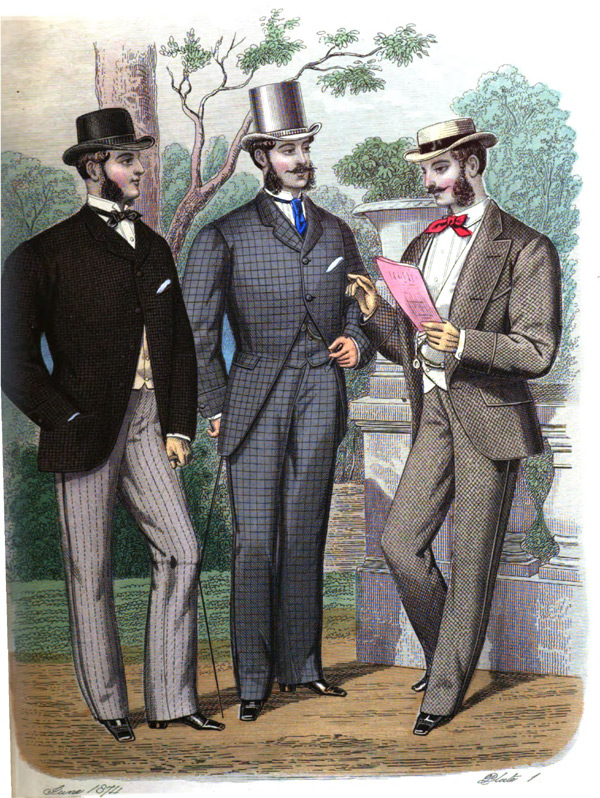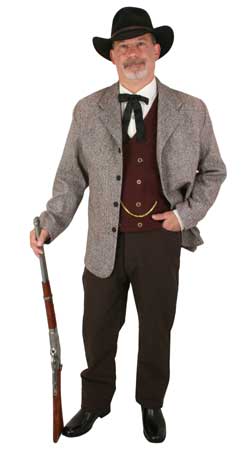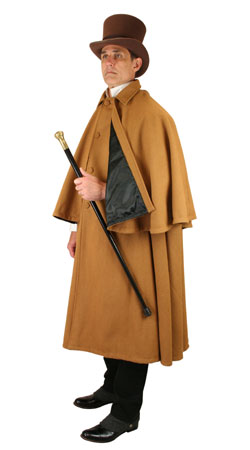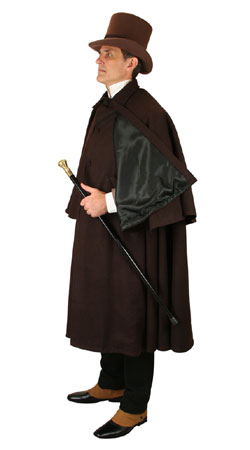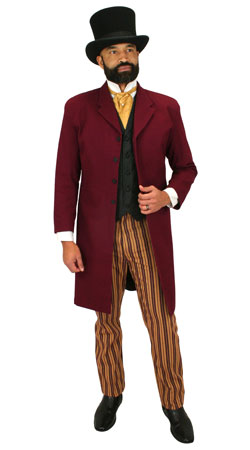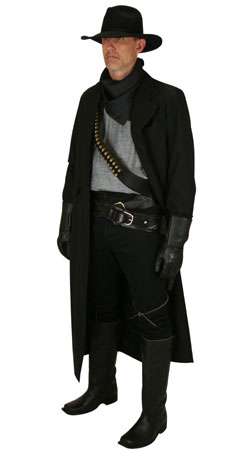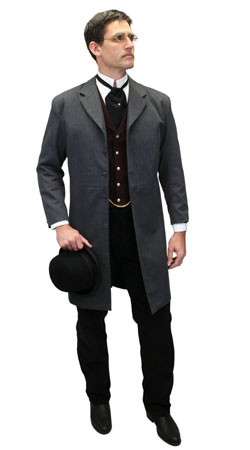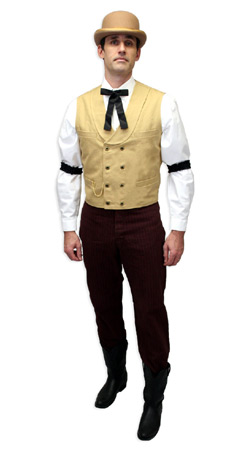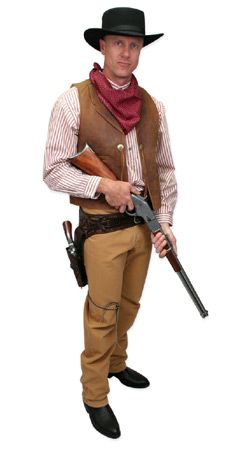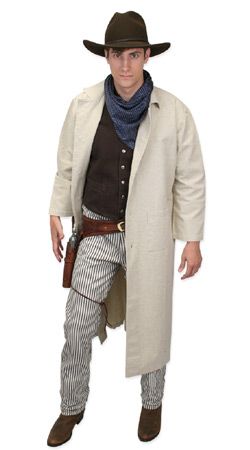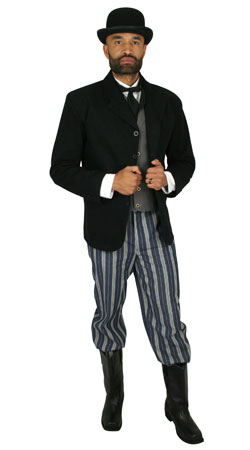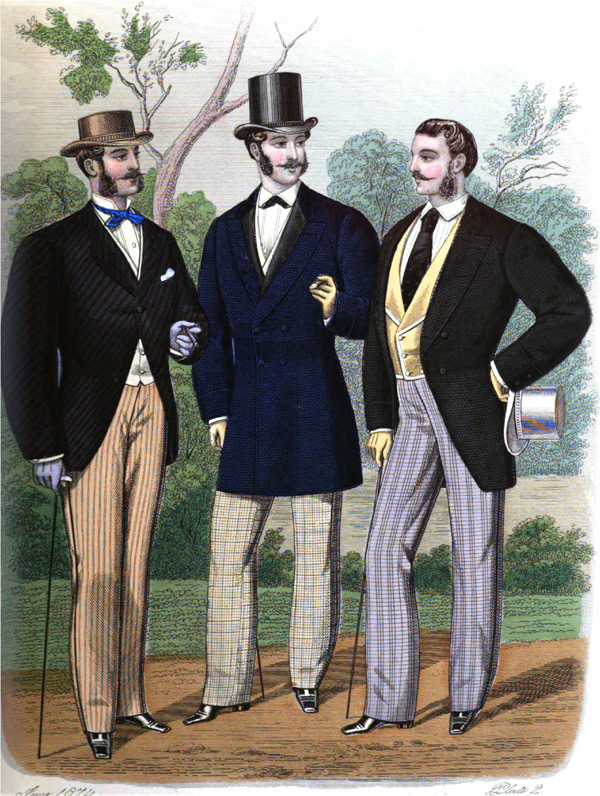Prices and Availability Subject to Change. Please call 800-997-4311 for more Information.
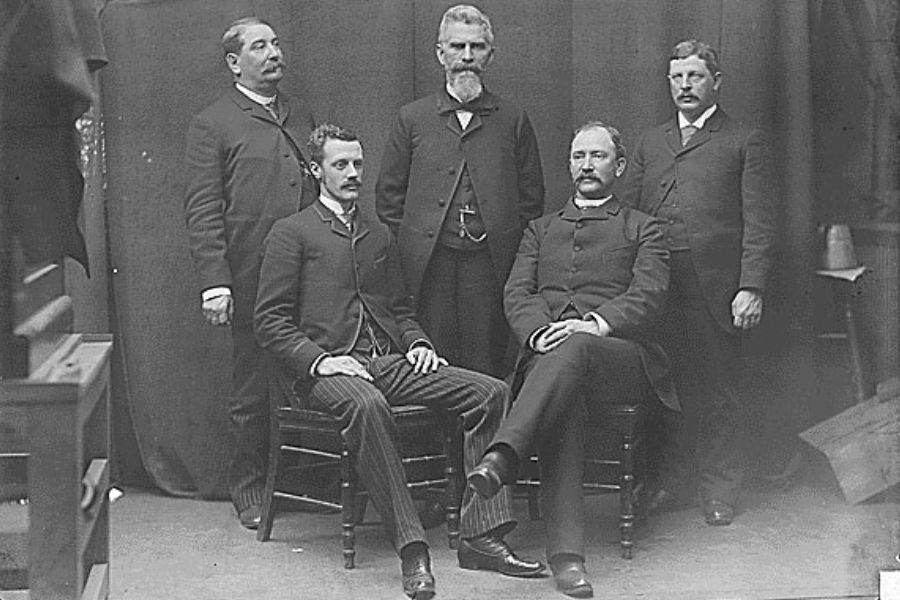
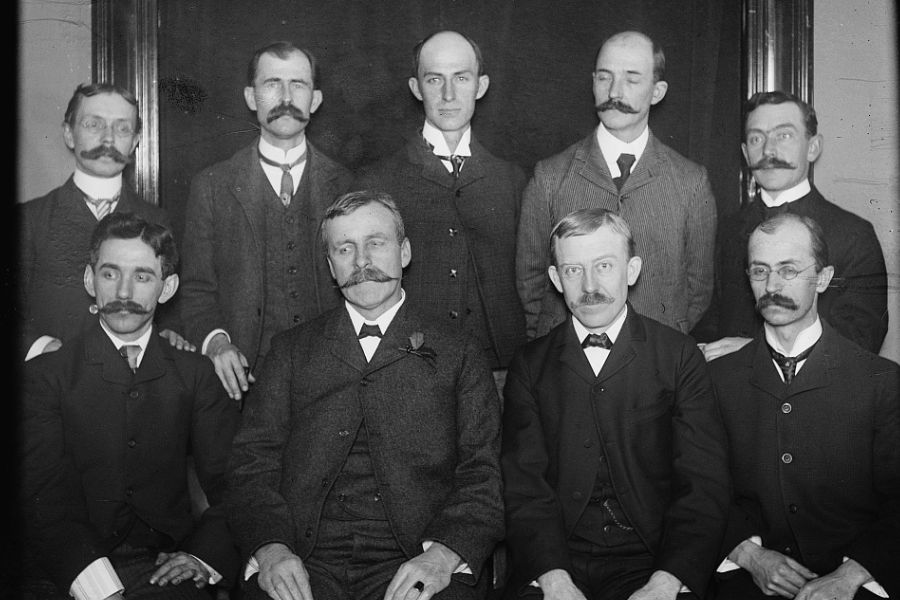
1890s Men's Clothing Guide
The continued improvements in garment manufacturing, the rise of advertising and the expansion of trains throughout the United States brought many changes to the apparel industry. The introduction of the free rural delivery program by the Post Office paved the way for mail order catalog companies to reach even the smallest of towns. Sears and Roebuck used this expansion to great advantage, creating a 500-page catalog with an array of goods available at affordable prices. This marks a true turning point in American consumerism.
During the 1890s, the average working man's wardrobe consisted entirely of mass-produced clothing. From suits to overcoats to long johns, everything could be purchased from department stores or their catalogs. With this change men's clothing continued to be even more standardized with the 3-piece black wool sack suit becoming the standard for office workers everywhere.
Mens 1890s Coats
The defining characteristics of coats in the 1890s are their high necklines and a very trim fit. Coats were cut to a shorter length and buttoned by the top button but then leaving the rest open to display the vest and watch chain.
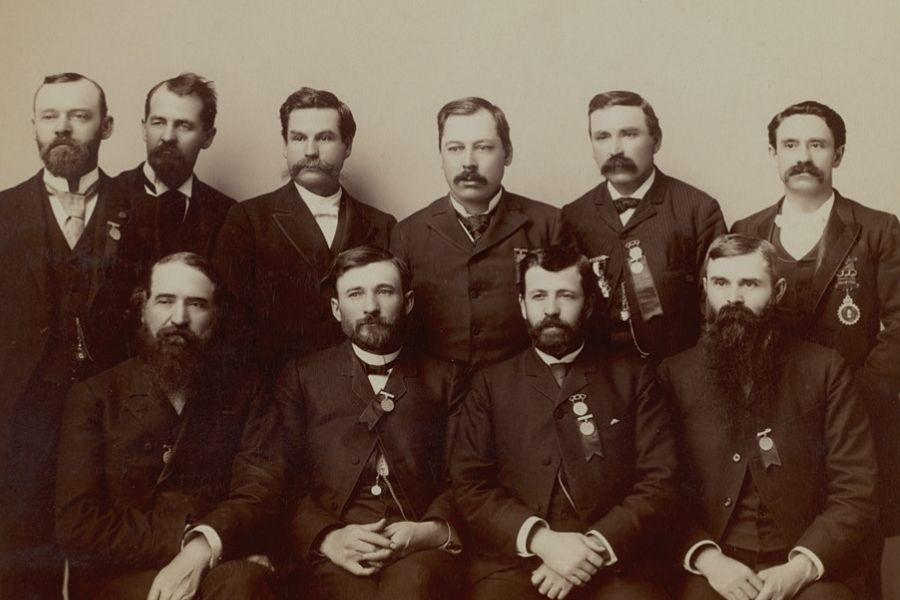
Frock Coats to Morning Coats
Frock coats, predominantly the Prince Albert double-breasted style, were used for formal day wear, but were rapidly being displaced by the morning coat. The morning coat, also called a cutaway coat, featured a waist seam and a sloping front opening and was less weighty than the double breasted frock. example example example The versatile cutaway coat was also seen being worn by businessmen and for semi-formal occasions. Catalogs also show the "English walking suit", which was a 3 piece cutaway suit made of tweed.
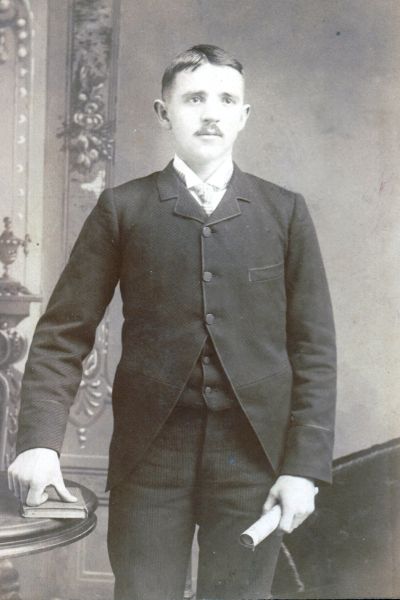
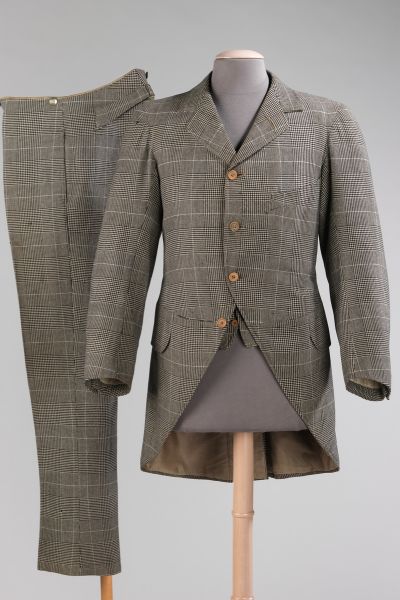
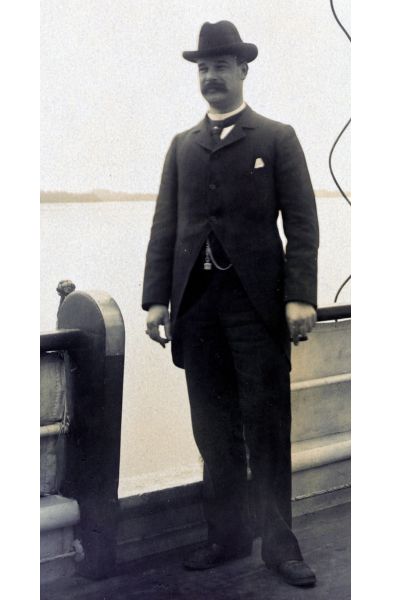
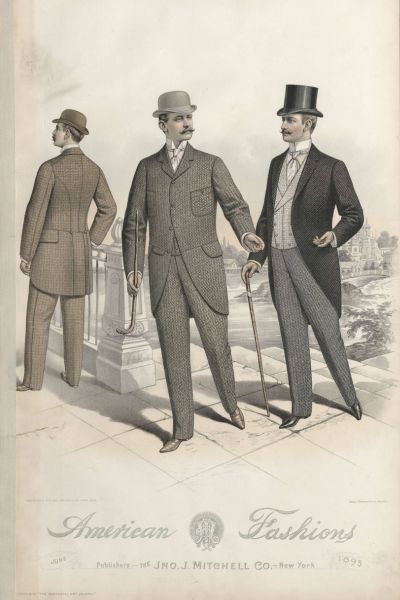
Sack Coats
The sack coat and sack suit continued to rise in popularity throughout the decade, even among the upper echelons of society. The versatile garment was used in a variety of settings often based on the fabric that was used in its construction. The sack suit's adaptability was evident in the range of materials used, from durable tweeds and plaids for everyday wear to lighter, breezier fabrics and colors for summer sports and leisure activities. Even though it was prized as a more comfortable alternative to frock coats and longer cutaway coats, the sack coat was still cut in a trim style with a high neckline. As with other coats, the top button was secured but the others left open to allow a view of the vest and pocket watch chain.
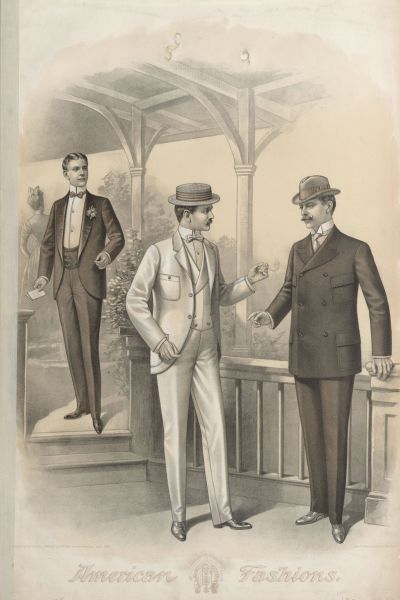
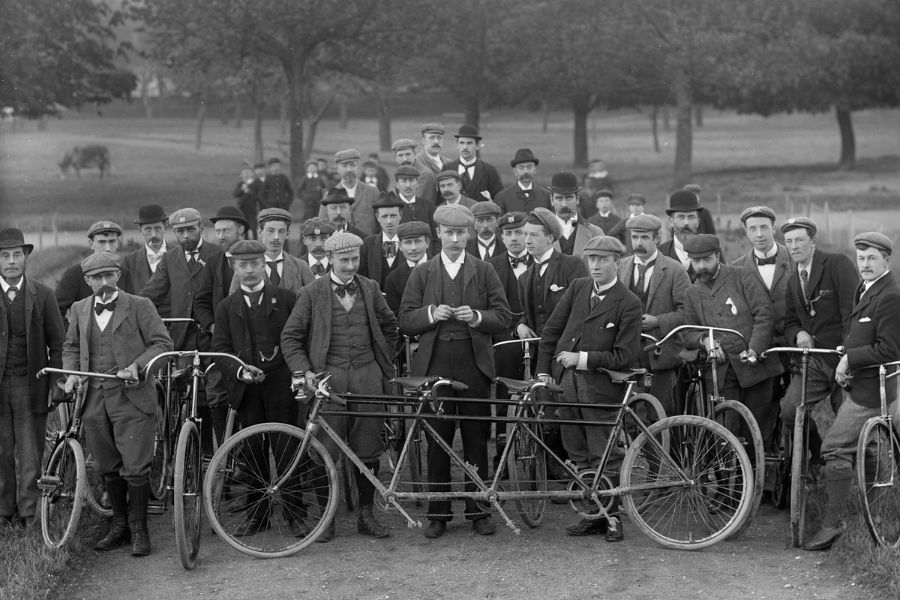
Sportswear
As the middle class grew in size, leisure activities became more popular and necessitated specific garments for each sport. Norfolk jackets, Reefer jackets and blazers were used for hunting, golf, tennis and rowing. In 1891 James Nasmith created basketball as an indoor sport for winter months and quickly became very popular among men and women.
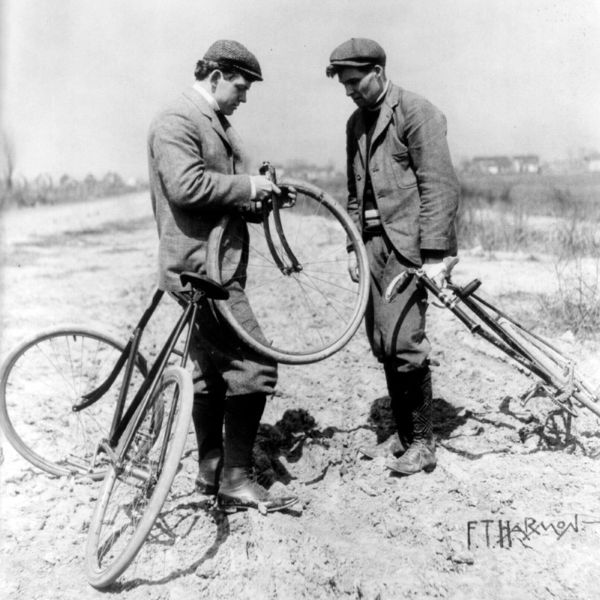
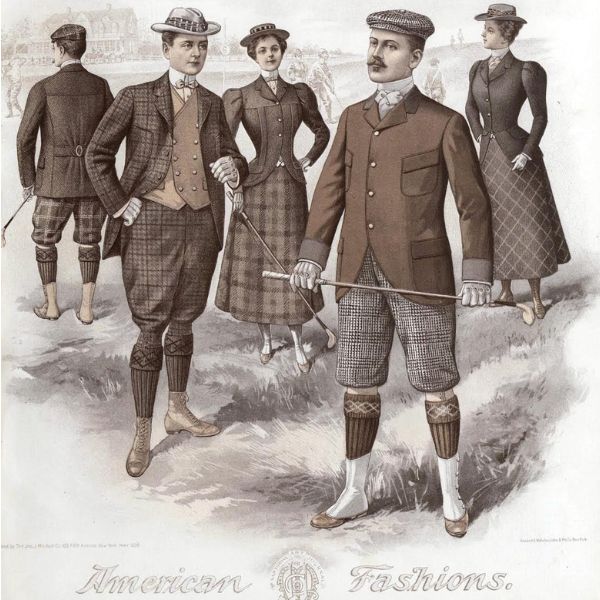
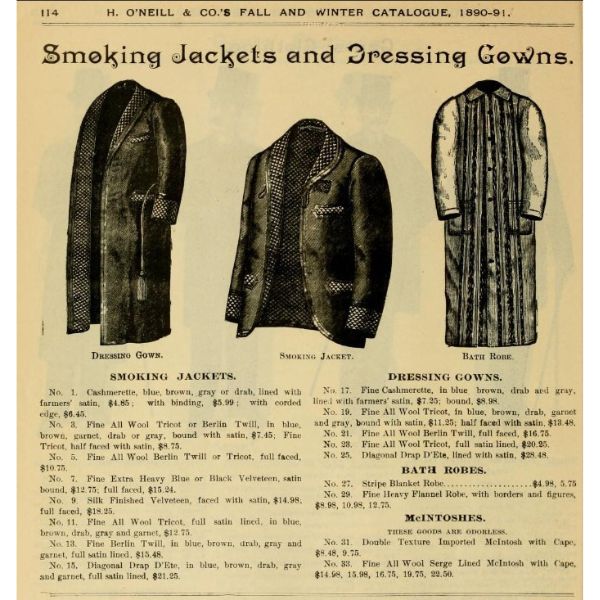
Smoking Jackets
The smoking or breakfast jacket maintained its popularity throughout the 1890s as a casual at-home garment. These jackets, adorned with the signature braided trims and frog closures of earlier decades, could be conveniently purchased via mail order from numerous catalogs.
However, the color palette for these jackets shifted to more subdued tones during this period, with a preference for muted plaids in “blue, brown, drab, gray and garnet”, as well as, classic black.
Overcoats
Overcoats, or "topcoats," such as the knee-length, single-breasted Chesterfield example and the longer, and frequently double-breasted Ulster, remained in vogue during the 1890s. The Ulster often featured a cape, as famously depicted in illustrations of Sherlock Holmes.
Another fashionable overcoat style of the decade was the Covert topcoat, which had its origins in hunting and riding attire. The Covert was single-breasted with a fly front and was cut just slightly longer than the sack coat worn underneath. Made from "covert" cloth, these topcoats were typically available in various shades of tan.
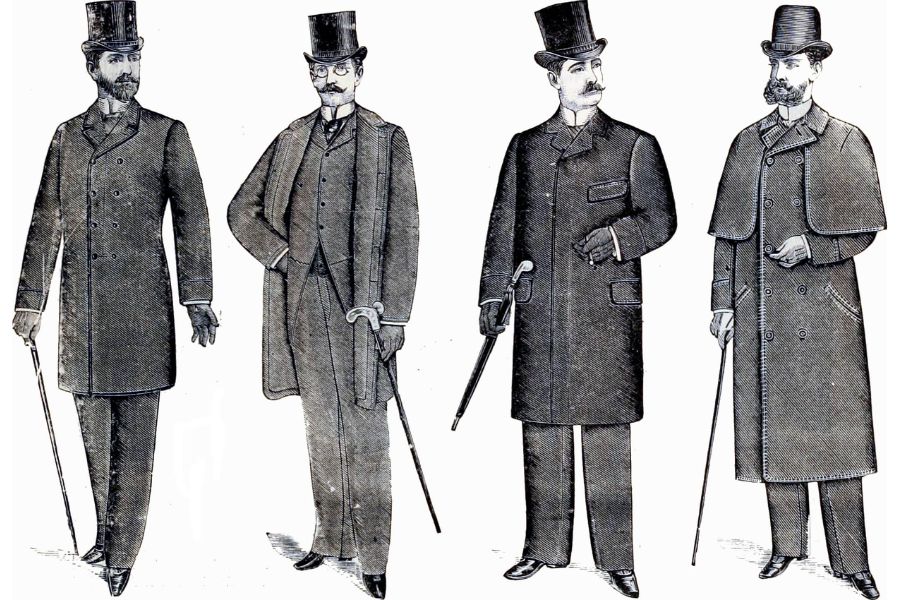
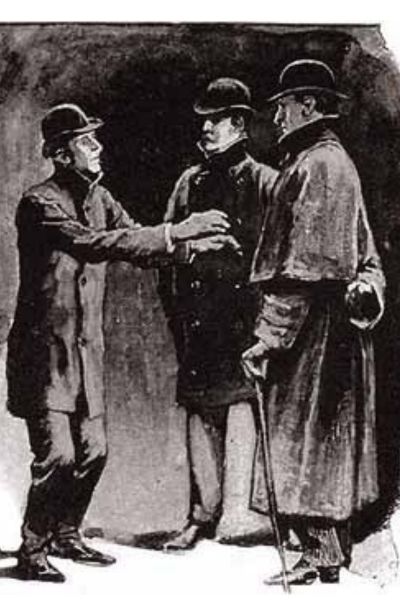
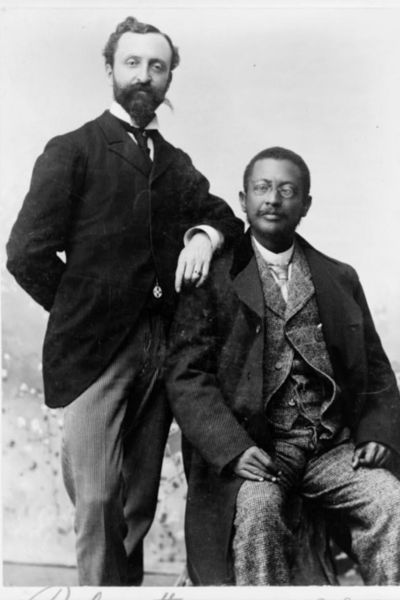
Evening Wear
The black tailcoat's popularity continued into the 1890s. This elegant garment, featuring a silk roll or notched collar and matched with trousers that often boasted braided side seams, was the epitome of sophistication. Completing the ensemble was a low-scooped waistcoat in white, black, or a subtle pattern, worn over a crisp white tall collared shirt with a plain, starched front or dickey. A bow tie, white or black depending on the occasion was the neckwear of choice. A fine silk top hat finished the look.
As the decade progressed, the tuxedo, also known as the dinner jacket, became increasingly fashionable and an acceptable alternative to the tailcoat.
For those seeking additional warmth and style, the Inverness cape was a popular choice for formal outerwear. This long, single-breasted, sleeveless coat featured a cape and was worn open over the tuxedo or tailcoat, providing both comfort and a dash of drama to the overall ensemble.
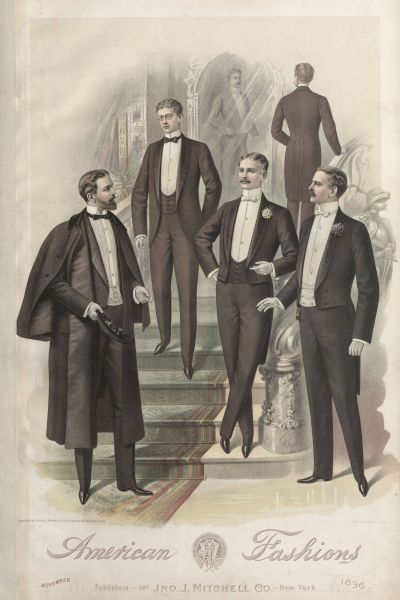
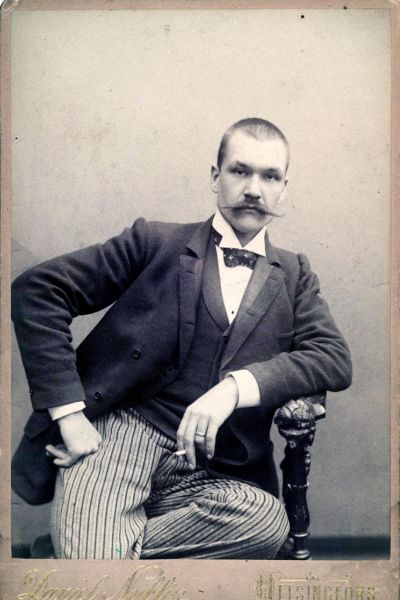
Trousers
Trousers continued to be closely fitted, but as the decade progressed the legs became a bit looser than was seen in the previous decade. Suspenders remained the essential means of keeping trousers in place. The color palette for trousers was dominated by muted tones, including grays, browns, tans, dark blues, and blacks.
While trousers often matched the jacket and vest, creating a cohesive three-piece suit, it was not uncommon to see striped trousers or lighter-colored trousers paired with a darker vest and jacket.
This mix-and-match approach added a touch of variety to men's fashion. For sports and summer leisure activities, lighter-colored trousers worn with matching jackets became a popular choice, offering both style and comfort.
In addition to traditional trousers, loose knee breeches, also known as knickers, gained popularity for sporting activities and bicycling. These practical garments were often paired with a Norfolk or sack jacket and gaiters, creating a functional and fashionable ensemble that allowed for greater freedom of movement during physical pursuits.
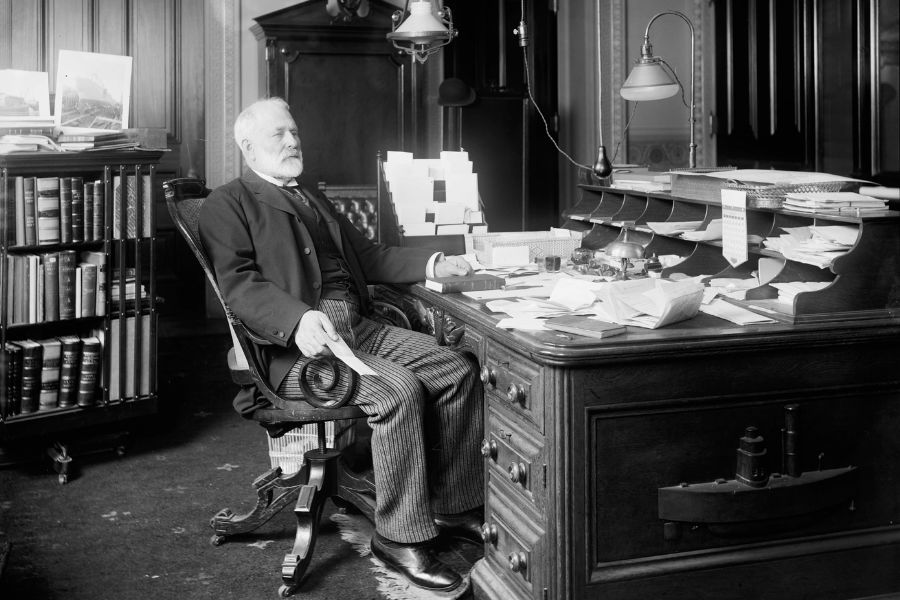
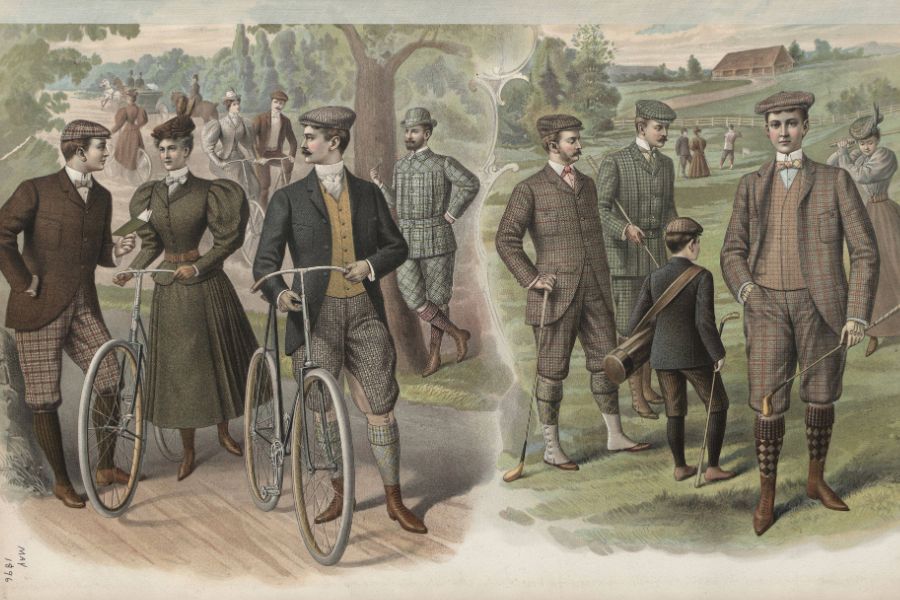
Shirts
As with the rest of the men's wardrobe, shirts became narrower in the body and sleeve to accommodate the trim cut vest and coat. Collars, however, grew to extreme heights with some as high as 3 inches. Collars could be straight or ironed to a small wingtop. Full turn down collars were reserved for more casual jacket pairings. Cuffs were also necessities and were more visible due to the tightly fitted sleeves. Although shirts in stripes and prints were available in catalogs, white shirts remained the most popular choice.
Working-class men often opted for plain white shirts or those made from light blue or striped chambray fabric. These shirts were sometimes worn without the collar attached or paired with a softer, turned-down collar, which was typically concealed beneath a vest, but not always as seen in the picture of the feather duster salesman.
As the decade progressed, turtleneck sweaters began to make an appearance, particularly for sporting activities. These versatile garments were even worn under suit jackets, showcasing the increasing influence of sportswear on men's fashion.
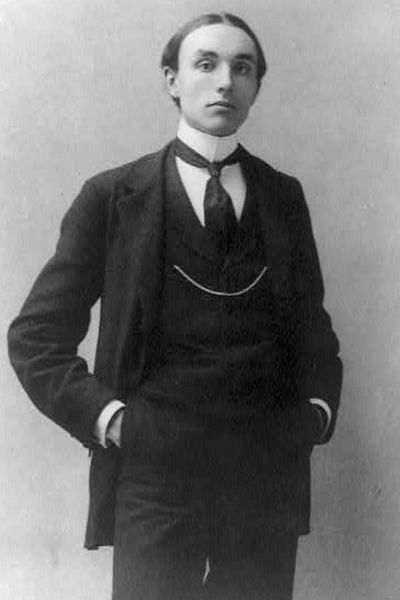
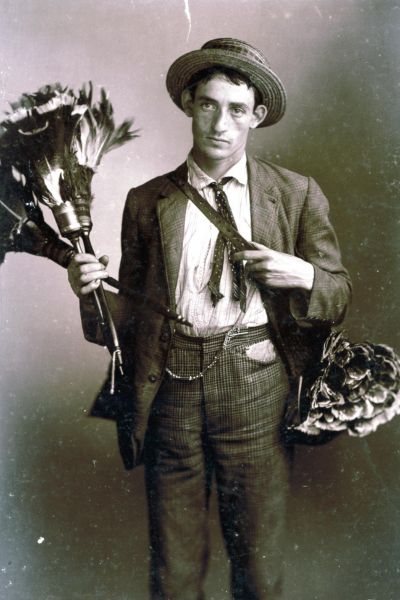
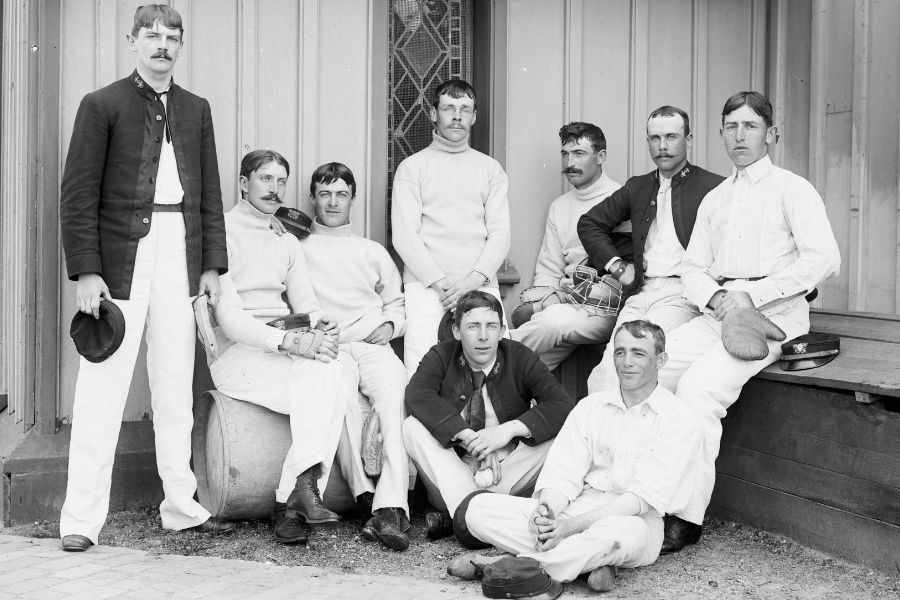
Neckwear
Ties were available in nearly any style imaginable, but were generally smaller than previous decades. A small bow tie, a four in hand or an ascot were equally acceptable for work or leisure.
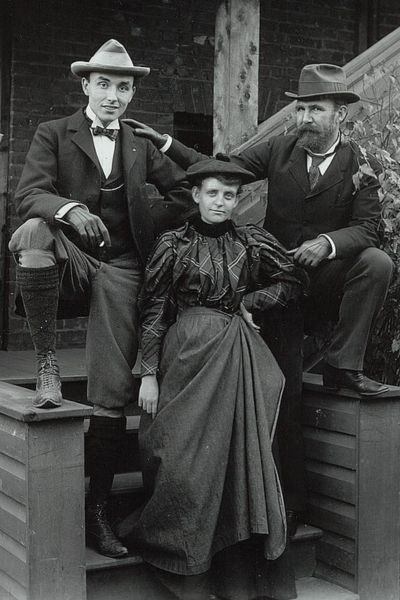
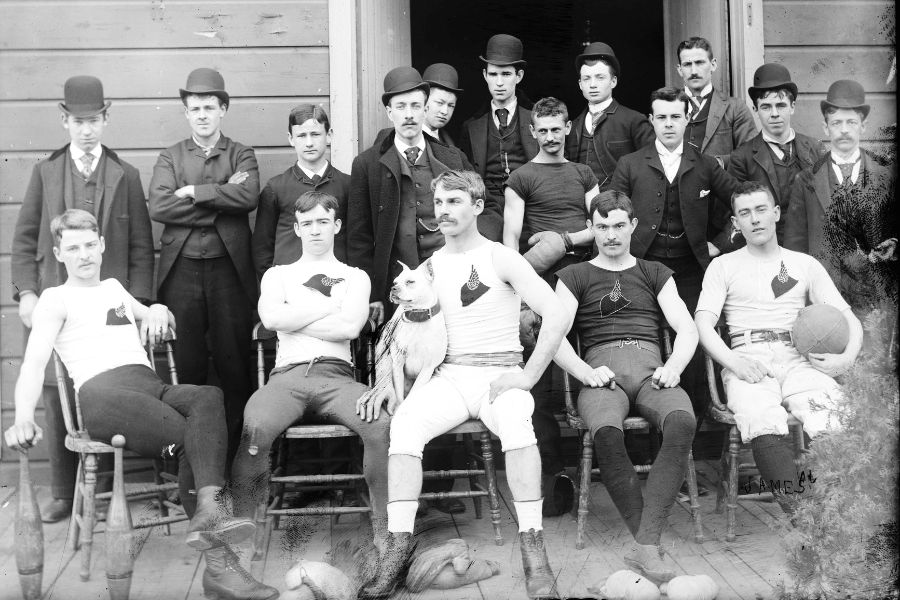
Hats
The derby hat was the most popular choice for daywear, perfectly complementing the era's long and narrow silhouette with its tall crown. This iconic hat style was a staple in every fashionable gentleman's wardrobe.
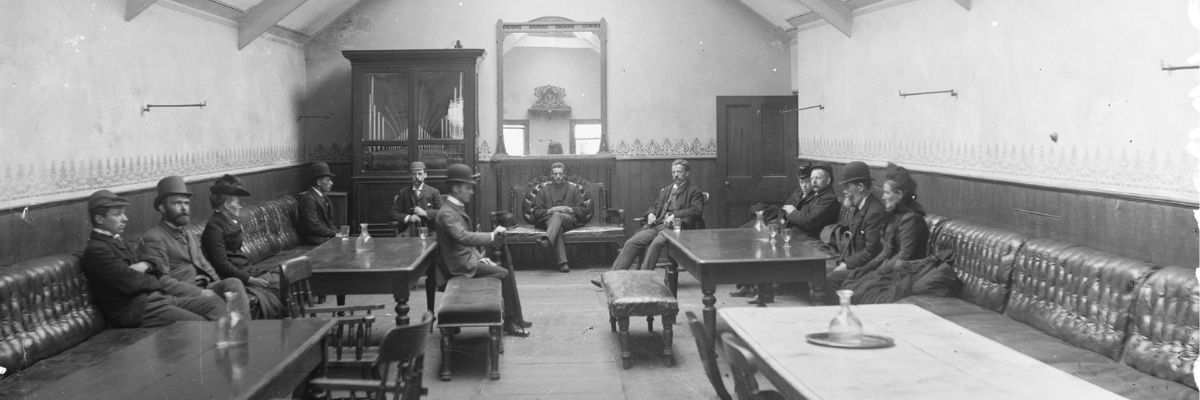
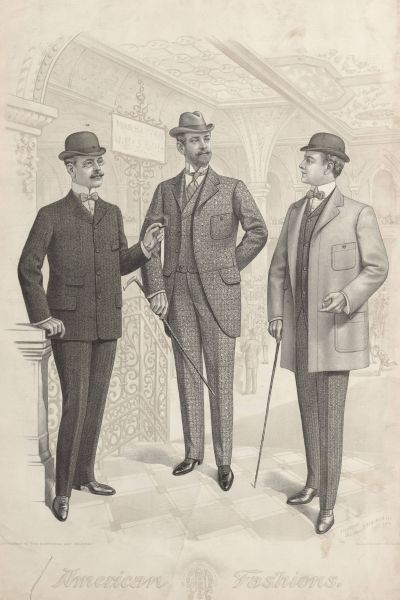
The Homburg hat, with its distinctive central crease and turned-up brim, enjoyed a period of prominence throughout the 1880s and 1890s, particularly among gentlemen and businessmen. Even the fashionable Prince of Wales, Albert Edward (known as "Bertie"), favored this stylish accessory.
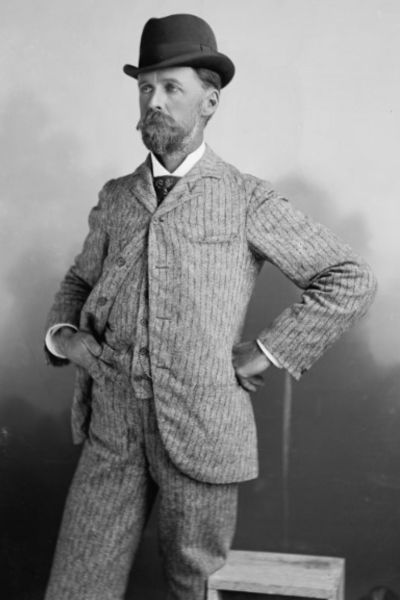
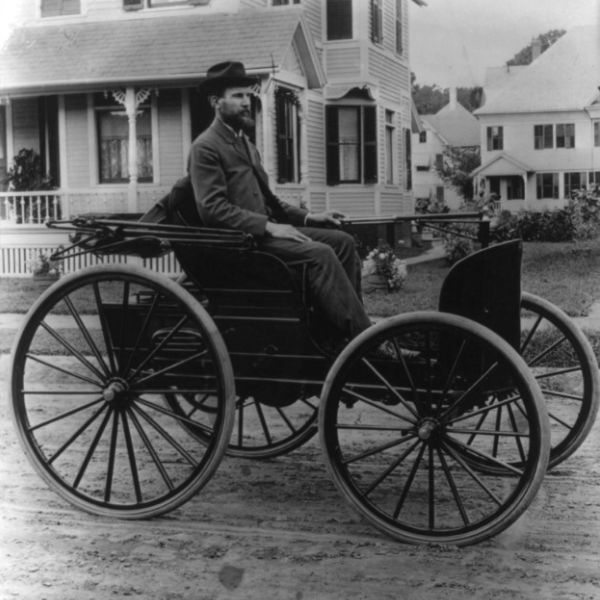
Relatively new to the fashion scene was the Fedora, a hat style that would eventually eclipse the stiff Homburg entirely and become the defining headwear of the early 20th century. This soft hat featured an indented crown with a height of 4 to 5 inches and was available in a variety of felts and colors.
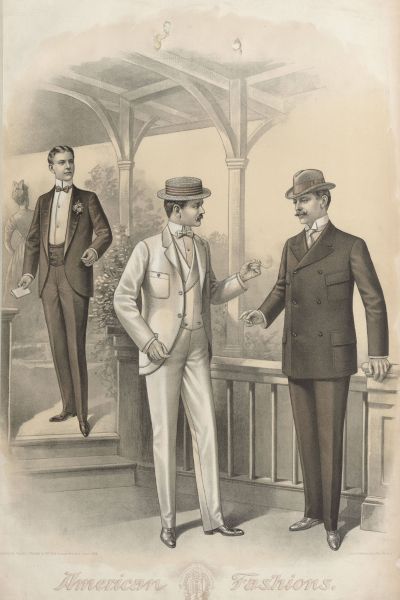
For summer leisure activities, straw boater hats were a common sight, offering a light and breezy option for warmer weather. Caps, too, found their place in sporting activities and other casual occasions.
For evening wear and formal daytime occasions, the top hat remained the undisputed choice, often paired with a sophisticated Prince Albert coat or a dashing cutaway coat.
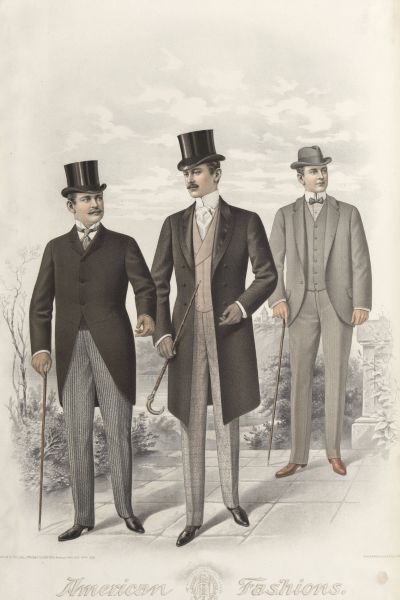
Another notable style was the wide-awake hat, featuring a wide brim and soft felt construction, which was very popular in the western parts of the United States as it provided sun protection for the eyes as well as the head.
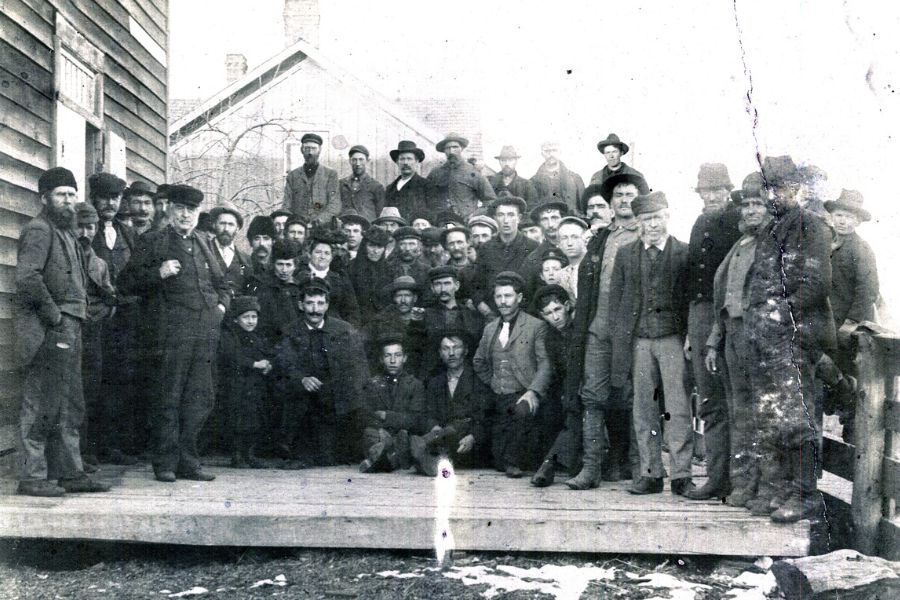
Q&A About 1890s Men's Fashion
What did men wear in the 1890s?
What was the fashion style in the 1890s for men?
What did upper class men wear in the 1890s?
Complete Late Victorian Outfits
At Historical Emporium, we offer a full line of men's period clothing which are suitable for movie and TV production, theatrical, living history and performing arts requirements, and are also perfect for vintage weddings!
All of the products we sell are sold individually, but we have put together these full outfits to showcase the elements of late Victorian style for your consideration and inspiration.
Click any image for a close-up and a list of the products shown.
